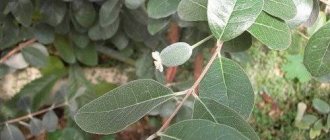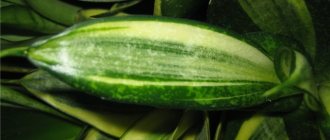Since time immemorial, laurel has been famous for its decorative, healing and culinary properties. In Ancient Greece and Rome, a wreath made from this plant was considered an indispensable attribute of the god Apollo and the Roman emperors. It was a symbol of success and triumph, which was awarded to the winners of military battles and sports competitions. Laurel has become a real decoration of southern gardens and estates, and bay leaves are used in the preparation of many dishes. Although the plant belongs to the genus of subtropical shrubs and trees, the crop is quite unpretentious and can withstand light frosts, which allows it to be grown in summer cottages, as well as indoors.
bay tree
Description of culture
Laurel belongs to the evergreen subtropical plants of the Laurel family. The main habitat of the culture is the coasts of the Mediterranean and Black Seas, Transcaucasia, the Canary Islands, and the Azores. The genus of culture consists of two types - noble and Azorean (Canary) laurel.
There are many popular names for noble laurel - real, Greek, sweet, laurel tree. Decorative cultivation of this plant began in the middle of the 16th century. It is an evergreen tall shrub or tree that can reach 6 m in height. Elongated oval leaves from 4 to 8 cm wide and up to 20 cm long have a matte surface. The fruits are black with a blue or brown tint and reach up to 2 cm in length. When grown indoors, it rarely blooms.
A bay tree can grow up to 6 meters in natural conditions, but it is often grown indoors.
The main habitat of the Azores laurel is the Canary and Azores Islands, where the name of the species comes from. Trees can grow up to 15 m high. Leaves are 6-8 cm wide and up to 15 cm long.
Regardless of the type of crop, the bay leaf has a dark green color and a dense leathery structure. They grow in the shape of an elongated ellipse with wavy edges and a narrow edging of a light shade. The foliage is characterized by a high content of essential oils, the largest amount of which occurs in the 5-6th year of development of the laurel bush or tree.
Important! In spring, about a third of the old leaves of an adult plant may fall off.
The plant blooms once a year - in the second half of spring. The flowers are inconspicuous in appearance, yellow in color, collected in an umbrella-shaped inflorescence. The fruits are small, single-seeded berries of blue-black color.
The plant blooms once a year and has small, dim yellow flowers.
To grow, the plant requires warm weather up to +26°C, bright but diffused sunlight. Laurel tolerates shade well. Exposure to direct rays negatively affects the development of foliage. The crop is unpretentious to growing conditions and can tolerate short-term frosts down to -15°C. The plant is resistant to high humidity and requires abundant watering in summer and minimal watering in winter. At home it can live up to 15 years. For normal development, young seedlings will need to be replanted in the first two years, adult plants - every 4 years. If necessary, formative pruning of branches is carried out in March.
Botanical description
The genus Laurel (lat. Laurus) is part of the Laurel family and has only 2 species. Grows in the Canary Islands and the Mediterranean region. Up to forty species of laurel are currently included in today's taxonomy in English. Laurels are evergreen shrubs or trees. The simple leaves are leathery to the touch, the edge of the leaf is entire and slightly wavy. The axillary inflorescences are umbrella-shaped. If the plant is well cared for, then young specimens can grow at high temperatures and low air humidity; adult specimens will grow poorly under such conditions.
Camphor laurel (tree)
One of the popular varieties of laurel plants that are grown at home or in garden plots is camphor laurel (another name is camphor tree). Strictly speaking, in the scientific classification this plant belongs to the species of the genus Cinnamon. However, its belonging to the Laurel family gives grounds for amateur gardeners to classify the crop as a variety of laurel.
Another representative of the Laurel family is camphor laurel.
The regions of Southeast Asia - Taiwan, southwestern China, some islands of Japan, Korea, and Indonesia - are considered to be the birthplace of camphor laurel. Subsequently, this subtropical evergreen plant spread to many countries with warm, humid climates. In the second half of the 18th century, the camphor tree appeared on the Caucasian coast of the Black Sea. Initially it was grown as an ornamental plant in gardens, parks and estates. In the 19th century, the use of culture for industrial purposes began.
The main beneficial quality of the plant is its essential oil content, more than 90% of which is camphor. This substance has medicinal properties and is used in the manufacture of various medications. Camphor ointments and tinctures are used to cure rheumatism, arthritis, diseases of the heart, blood vessels, and disorders of the central nervous system. The largest amount of camphor is found in the woody parts of the laurel - the trunk and branches. However, essential camphor oils are also contained in the leaves, flowers, and fruits of the plant.
Important! The leaves of the plant are also used as spicy seasonings in the preparation of various dishes.
Camphor laurel is valued for the presence of a large amount of camphor, which is used in medicine and cooking.
The camphor tree is distinguished by its growth rate; it can reach a height of 20-50 m with a massive trunk up to 5 m in diameter. Such plants love warmth and moisture and develop well in subtropical regions. In addition to camphor extraction, they are used to create park and garden decorative compositions and hedges. However, powerful root systems can cause the destruction of various sewer, drainage, and communication systems. In addition, the foliage of the tree contains substances that deteriorate the quality of fresh water in soils and reservoirs.
There are decorative forms of camphor tree that can be grown indoors or in a summer cottage. The technique for growing such a crop is generally similar to the cultivation of noble or Azorean laurel, but requires more fresh air. For propagation, the methods of planting seeds and semi-lignified cuttings or layering are equally successful. The optimal soil composition for camphor laurel is a mixture of two parts turf and one part each of earth, sand, peat, and humus. The plant usually blooms in late May, early summer, and bears fruit in November.
Camphor laurel is often grown for decorative purposes - to create compositions and hedges.
Description of the plant
The bay tree comes from a genus of evergreen plants in the laurel family. For a long time, laurel trees have been grown in many subtropical countries.
Laurel includes three types: camphor, noble and Azorean.
The tree contains essential oils from 3.5 to 5.5%. The tree is dioecious, with a dense crown, has a pyramidal shape and evergreen foliage, hard and smooth. In nature it reaches about 25 meters in height.
Flowering begins in spring, the tree is covered with umbellate, unisexual, axillary inflorescences of milky or pale yellow color. The fruits are single-seeded, fragrant drupes of blue and black shades that ripen in the fall.
The lifespan of the laurel is amazing; the tree can exist for about three hundred years. A tree that has been treated without proper care quickly becomes wild. Bay leaves are considered one of the indispensable seasonings in brines and marinades.
Laurel is often found in Georgia, Greece, Crimea, Asia, the Black Sea coast and Transcaucasia.
General requirements for growing laurel
To grow a laurel tree or bush in an apartment or country house, you can use both shaded and sunny places. In summer, an open balcony or garden plot is suitable. For wintering you can use a glassed-in loggia, a greenhouse, or a well-lit room. In this case, the main condition for the normal development of seedlings is maintaining optimal ambient temperature. During the active growing season - from +18 to +22°, in winter - in the range of 10-12° above zero.
Laurel does not have clearly defined periods of winter dormancy. The intensity of growth is determined by the surrounding temperature conditions and the degree of lighting. However, the plant needs a certain period of rest.
Important! In winter, the laurel can be kept on an insulated balcony; during extreme cold, it can be brought into a well-ventilated room.
A bay tree can cope with slight frosts, but it is better not to leave the plant in the cold.
Usually the plant can withstand short-term frosts down to -10°, cold-resistant varieties - up to -15°, but it is better not to keep seedlings in frozen soil. The crop can be grown in open ground only in areas with a warm climate, with above-zero temperatures throughout the year. In temperate climatic latitudes, a bay tree or bush can be planted in tubs and kept indoors or in a greenhouse in winter. During the period of intensive growth, laurel is most vulnerable to frost, so in the spring you should not rush to take it out into the fresh air.
Laurel varieties
There are 3 types of bay tree:
camphor laurel
Camphor, whose homeland is China. The plant is quite popular in Asia and India. It is an evergreen plant with hard, lance-shaped, fleshy, speckled leaves.
Flowering lasts about a week and a half, with yellowish inflorescences.
The laurel tree contains a lot of camphor oil, most of which is located in the trunk and wood of the laurel, approximately 90%. The production of camphor is widespread in Japan and China, where the oil is obtained from bay shavings and branches by distillation.
In addition to camphor oil, laurel leaves contain a large amount of tannins and selenium. Camphor oil is one of the best medicines in the fight against heart disease, depression, and to prevent infectious diseases.
Externally, camphor oil is used for rubbing sore joints and bruises, as an anesthetic, distracting and anti-inflammatory agent.
Azores laurel
Canarian bay tree or Azores bay tree. The plant is native to the Azores Islands. The trees grow up to 12 meters high with large leaves, dark green, 5.5 centimeters. in width.
Blooms in spring. Dull yellow inflorescences are collected in umbrellas and are located in the axils of the foliage. Azores laurel is often used for decoration.
The most popular varieties of laurel trees are willow and angustifolia laurel.
Noble laurel
It grows in the western part of Transcaucasia and the Mediterranean at an altitude of up to three hundred meters above sea level. Grows in height up to 4−8 meters. The branches of this species are bare; the leaves are simple, leathery to touch, lanceolate in shape, growing up to 20 centimeters in length and up to 8 centimeters in width.
The pointed leaves are stored on short petioles. Lemon flowers are collected in umbrella-shaped inflorescences, which grow from the axils of the leaves in 1-2 inflorescences. There are a number of forms that vary in leaf size and shape. Flowering stage from mid to late spring.
Carrying out laurel transplants
The root system of laurel bushes and trees is quite vulnerable to damage. At the same time, the roots gradually grow, and the plant must be replanted periodically. This should be done using the transfer method - carefully remove the laurel from the flowerpot along with clods of earth, then move it to a larger container.
When the roots grow too much, the plant must be carefully transplanted into a larger pot. They do this by transfer method
We can highlight the following requirements for transplanting laurel seedlings at home.
- With normal development, young shoots are replanted once every 2 years. When growth is slow, replanting is done less frequently so that the root system is properly strengthened.
- Plants over 4 years old are replanted every 4 years.
- Before transplanting, water the soil in the flowerpot generously and wait until the water is completely absorbed. This will make it easier to separate the lumps from the walls of the container. Then the plant is carefully removed and laid sideways on oilcloth or fabric.
- The plant is inspected, pebbles stuck in the root plexuses are carefully removed, and damaged roots are cut off. For quick healing, the cut sites are treated with charcoal powder.
If damaged roots are found, you need to cut them off and treat the “wound” with charcoal - The pot into which the crop is moved should be approximately 2-3 cm larger in diameter than the previous container.
- It is necessary to make holes in the bottom of the flowerpot and lay a drainage layer to drain excess water, which will protect the roots from rotting. You can use small pebbles for this.
After all the procedures performed, the plant is planted in a new container. Laurel is unpretentious to soil characteristics, but for better growth you can add humus. A little sand is added to the clay-saturated soil to improve breathability and moisture absorption. On the contrary, you can add a little clay to sandy soil so that water is retained in it longer.
A drainage layer must be placed at the bottom of the pot to prevent root rotting.
The optimal ratio of soil components for growing at home is two parts of turf and one part of sand mixed with humus. In the first year, it is not necessary to fertilize the soil, then you can apply any complex fertilizer 3-4 times during the season. In the year when the plant is not replanted, it is necessary to add soil to the flowerpot and update the soil.
Important! The soil around the laurel bush or tree trunk must be loosened periodically.
Brief description of cultivation
- Bloom . Laurel is grown as an ornamental foliage plant.
- Illumination . Needs a lot of bright light.
- Temperature regime . During the spring-summer period - from 20 to 26 degrees, and in the fall - from 12 to 15 degrees.
- Watering . During the growing season, it is necessary to water abundantly and systematically; this should be done immediately after the top layer of the soil mixture in the pot has dried. On hot days, watering is carried out twice a day. With the onset of autumn, watering is reduced, and in winter it should be rare and meager, but the clod of earth in the pot should not be allowed to dry out.
- Air humidity . It should be elevated. In hot weather, the bush is systematically moistened with a spray bottle, and wet expanded clay is poured into the tray.
- Fertilizer . During the growing season, fertilizing is carried out once every 4 weeks, using mineral complex fertilizer. In winter, fertilizer is not added to the soil mixture.
- Rest period . Observed in October–March.
- Transplant . Young bushes are replanted once every couple of years, and adults - once every 3 or 4 years.
- Soil mixture . Its composition should include sand, peat, turf, humus and leaf soil (1: 1: 1: 2: 2).
- Trimming . The bush is pruned in mid-August.
- Reproduction . By cuttings and seed method.
- Harmful insects . Scale insects, spider mites and mealybugs.
- Diseases . Sooty mushroom.
- Properties . Laurel has medicinal properties and is also widely used as a spice.
How to grow (laurel) bay tree at home? — Everything will be fine — Issue 53 — 10/01/2012
Pruning and crown formation
Typically, pruning of branches and formation of the crown of the plant is carried out in March, if by this time the young shoots have managed to grow. Some gardeners recommend performing this operation in August so that new branches will grow the following spring.
To improve the development of the laurel, old woody branches are cut off by about 20 cm. Below the cut, a sufficient number of buds should remain so that the shoots that grow from them subsequently form a voluminous crown.
Once a year, in March or August, it is worth pruning the plant - this will ensure active growth of the crown
With the help of pruning, laurel crowns can be given a wide variety of decorative shapes - a ball, a cone, a pyramid. This procedure must be started from an early age of seedlings.
Important! To give the desired shape, you need to trim the branches a little, but often.
Creating the necessary conditions: temperature, lighting, air humidity
Bay tree is unpretentious to temperature conditions. The plant prefers fresh air with a temperate climate. In summer, it is useful to take pots with bushes to the loggia or balcony. +18-20°C in summer is a favorable temperature for the plant.
In winter, laurel easily tolerates low temperatures. +10-15°C are not dangerous for the bush. On cold windowsills on the north side of the window, the plant does not experience discomfort.
To maintain moderate air humidity in the room, regular ventilation is important. The plant itself is sprayed with a spray bottle or irrigated in the shower.
In winter, the bay bush is kept in partial shade, as the plant slows down its growth.
When it comes to lighting, there are no strict rules. In order for the laurel tree to bloom and be lush, it is better to choose well-lit areas of the apartment. A windowsill is a great place to grow laurel. The bush does not need additional lighting.
Noble laurel grows wild throughout the Mediterranean. Laurel laurel is often grown as a houseplant.
If wild specimens growing in open ground reach 10 m in height, then potted trees are much smaller. They do not exceed 1.5 m in height. With the help of pruning, it is easy to get a beautiful lush and compact plant.
Frequency and abundance of watering
In the wild, laurel grows in coastal zones and, accordingly, tolerates high humidity well. The surface of the leaves should be periodically wiped with a damp sponge or cloth. At home, once a month, the plant needs to be hosed down with a stream of warm water under pressure, while covering the soil with polyethylene.
To maintain the required level of humidity, the pot with laurel must have a drainage layer and holes. The container with the plant should be placed in a tray with pebbles and moss at the bottom, which should be regularly moistened.
Laurel loves high humidity, so it is recommended to wipe its leaves with a damp cloth, and also periodically give it a shower
Water the laurel once a day with a moderate volume of settled water at room temperature, in the morning or evening. During dry periods and during hot weather, watering can be done more often. In winter, for the normal development of the crop, it is necessary to maintain the plant's dormancy; increased humidity during this period can disrupt its life cycle, so the frequency and abundance of watering in the winter months should be reduced.
Important! It will be useful for plants to add baking soda to water at the rate of 7 teaspoons per liter.
Watering and fertilizing
Laurel is a moisture-loving plant, but it does not tolerate stagnation of water in a pot. Therefore, in the summer it is watered abundantly, but make sure that excess moisture leaves the ground and goes into the pan. After watering, the top 2-3 cm of soil should dry out. Only after this is it necessary to moisten the soil again.
Under no circumstances should the earthen lump of the laurel dry out completely . Such drying out will be disastrous for the tree.
In winter, when the room temperature is maintained at about 10ºC, the plant is watered very rarely. Excessive moisture at low temperatures contributes to the rapid development of fungal infections.
Watering is carried out only when the top layer of soil, as in summer, dries out by 2-3 cm. And just like in summer, the lump of earth in the pot should not be allowed to dry out completely.
Usually in winter, laurel is watered every 3-4 weeks.
The tree is fed only in spring and summer during the growing season. Fertilizers are applied to moist soil 2 times a month. For feeding, you can use any mineral complex fertilizers. In winter, during the dormant period, fertilizing is not carried out.
Seed propagation of laurel
When using the seed method of propagating laurel at home, gardeners often encounter certain difficulties. The fact is that the seeds of the crop quickly lose a large percentage of their germination capacity, within 3-5 months. In addition, the high oil content significantly slows down their germination, which can last up to six months. For these reasons, it is necessary to use the freshest possible seeds, and you will have to wait quite a long time for the results of sowing.
Seeds are usually planted in the first months of winter. In order to speed up germination, seeds can be pre-treated with a special solution that stimulates growth. The depth of the planting should be about 1.5 cm. Before this, the soil must be loosened and moistened. Then the soil is covered with plastic film. Containers with planted seeds are kept in regularly ventilated rooms at a temperature of about +18°, the soil is constantly moistened.
You can propagate a bay tree by seed, but you will most likely have to wait a long time for germination - about six months
Important! Every week, the seeds should be carefully removed and inspected to prevent mold from developing. If a white coating is detected, it must be carefully removed and the seed washed with a weak solution of potassium permanganate.
When the shell cracks and the seeds begin to germinate, they must be transplanted into separate flowerpots. The sprouted seed is planted at a soil depth of about 5 cm, the first shoots usually appear a month later. Young sprouts should be protected from direct sunlight and heat.
When propagating by seed in open ground, ripe fruits are collected from laurel bushes and trees and the seeds are extracted from them. This usually happens in late autumn. The collected seed material is planted in the prepared area at a distance of about 8 cm from each other. The planting depth is approximately 5 cm. The first shoots sometimes appear as early as January, but usually these are weak shoots that die quickly. Typically, shoots appear at a constant temperature of about +22° from May to the end of summer.
Some gardeners prefer to grow laurel from seeds directly in open ground, but this is recommended only in regions with warm winters
How to plant laurel seeds at home
For laurel, the temperature and composition of the soil in which it will be grown are important. The culture prefers loose, breathable and nutritious soil. If the substrate is acidic, you need to add wood ash, lime or dolomite flour. Prepare a soil mixture from the following components:
- turf and turf soil - 2 parts each;
- sand – 1 part;
- peat – 1 part;
- humus - 2 parts.
The substrate for planting laurel seeds must be disinfected. For this purpose, it is fried in the oven at a temperature of +120 °C. Then they are scattered in pots or containers, the diameter and height of which is more than 10 cm. The container for growing laurel must be made of natural material - ceramics or clay. Wooden boxes are not very moisture resistant, and in a plastic container the roots are suffocated. The soil is well compacted and watered with warm water.
Even a novice gardener can figure out how to plant bay leaves at home. This is a relatively simple process. It is enough to place the swollen and sprouted laurel seed in the ground to a depth of 1 - 2 cm. The top of the planting is moistened again with a spray bottle. Next, the pots are covered with transparent polyethylene (it should not come into contact with the soil) and placed in a warm place.
In order for laurel seedlings to appear on time, be healthy and strong, it is necessary to provide them with suitable conditions. To do this, consider the following recommendations:
- The crops must be ventilated every day. To do this, the shelter is removed for a few minutes and then returned to its place. It is imperative to wipe off the condensation that has accumulated on the glass so that the laurel seed does not begin to rot.
- Since the bay tree is a heat-loving crop, it is advisable to germinate the seed in a well-heated room.
- It is important to control soil and air humidity. To achieve optimal performance, laurel crops are watered and sprayed (with warm water from a spray bottle).
When the first sprouts form on the laurel, the glass is removed. Now you need to especially carefully monitor soil moisture. Even slight drying of the substrate can destroy the seed and inhibit plant growth.
Application of vegetative propagation by cuttings and layering
At home, laurel is propagated by cuttings in the first months of spring or in June-July. Cuttings in open areas are carried out only in the first half of summer.
The cutting is cut from a semi-lignified shoot located in the lower or middle part of the laurel bush or tree. The future seedling should have three internodes about 8 cm long. In this case, the bottom leaf must be removed and the rest shortened by half.
The cuttings are planted in moistened sand at an ambient temperature of 16-20°, deepening the seedling by about 1.5 cm. Then the planting is sprayed and covered with plastic film. The cuttings take root and begin to grow within a month. As soon as they grow 2-3 cm, they need to be transplanted into separate containers.
Cuttings usually take root within a month.
Important! Another method of vegetative propagation involves planting layering - lateral shoots with a root system beginning to develop. Such shoots are carefully separated from the laurel, the cut sites are treated with powdered charcoal, then planted in the same way as the cuttings.
Preparing seeds for planting
Growing bay laurel from seeds also involves some preparatory measures for the seed.
For example, the seeds of this plant do not tolerate drying and retain good germination only for 3-5 months, and then only when stored in a cool and damp room.
Before directly planting seeds in the ground, you should free them from the shell, otherwise you will have to wait a long time for germination.
It is best to sow laurel in separate pots with a volume of at least one liter or directly in open ground (in a permanent place).
Usually the seeds germinate from April to August, but there are cases when they begin to germinate only in January, and then in the presence of severe frosts the seedlings immediately die.
To increase the germination of seeds, you must adhere to several simple rules: remove the fruits from the tree in November, keep the seeds moist but not wet until planting (no more than 2-3 months), and be sure to remove the skin before planting in the ground.
The germination process can also be accelerated by pre-soaking the seeds in a weak solution of potassium permanganate for 2-3 days, after which the oily pericarp should be cleaned.
Calendar of basic work on growing laurel
When growing and caring for laurel in open ground, you can follow this schedule for basic work.
| Season | Recommendations |
| Spring | In March and April, sanitary pruning of bushes and trees is carried out, removing damaged, woody and frozen shoots. Rooting of cuttings is carried out in cool greenhouses. Fertilize plants. |
| Summer | During the entire period, germination of seeds sown in autumn takes place. With this propagation option, it is necessary to regularly feed the soil with nutritional supplements. In June and July, cuttings are planted. August is the time for crown-forming pruning of bushes and trees. |
| Autumn | In October and November, ripened fruits are collected and seeds are sown. At this time, leaves are collected from adult plants for the purpose of preparing culinary or medicinal raw materials, and damaged, diseased shoots are pruned. |
| Winter | During this period, it is necessary to maintain a dormant regime, moderate the frequency and abundance of watering, and keep the plants in cool, bright, well-ventilated areas. |
In autumn and winter, the plant is disturbed minimally, since it is in a dormant state.
Such seasonal work is carried out at home.
| Season | Recommendations |
| Spring | The seeds are sown in March. In the first two months, propagation is carried out by vegetative methods by planting cuttings or layering. Regularly feed the soil. |
| Summer | During the entire period, seeds germinate and regular fertilizing is carried out. At the end of summer, formative pruning is performed. |
| Autumn | October and November are the time to collect fruits and raw materials from leaves. Feeding is rare. |
| Winter | The first two months are a rest period. In February, seeds can also be sown. |
In spring and summer, the plant needs to be periodically fed, watered, and pruned.
The plantings are regularly watered throughout the year. In summer, plants are watered more often and more abundantly. In winter, the intensity and volume of watering should be reduced.
Noble laurel
Laurus nobilis is a representative of the Laurel family. The genus contains both trees and shrubs. Its homeland is the Mediterranean. Laurel is common in the southwestern regions of the Krasnodar region in Russia.
Most gardeners grow laurel for its aromatic leaves, which are used in cooking. In Europe, this plant is an attribute of the interior; it is used in landscape design. Many Europeans grow them on their plots. In open ground it can reach a height of 10 meters and grow for about 100 years.
Unfortunately, laurel is not adapted to our winters. But it has become a favorite plant of many gardeners indoors. Indoors it can grow up to 3 meters. Laurel leaves are rich in essential oils, which release phytoncides that purify the air in the room.
In addition, they destroy bacteria and other pathogens.
The bay tree has glossy, leathery leaves. They have an oblong shape and reach 8-10 cm in length. During flowering, small yellow branches appear on it.
Caring for laurel at home
A useful plant will decorate any home. Laurel is an unpretentious plant. It does not cause much trouble for its owners, so it will add charm to your home.
Temperature
In summer, the laurel will be more comfortable outside. It is best to allocate a place for it in the country house, balcony or in the yard. It should be borne in mind that he is afraid of wind and drafts. The plant adapts well to high indoor temperatures during the hot summer.
It is accustomed to a tropical climate. Moreover, laurel is not afraid of frosts down to -5-7 degrees. In the southern regions, where there are dry winters, it will withstand temperatures down to – 15 °C. Under indoor growing conditions, the optimal temperature in winter will be 12-15 °C.
In the spring-summer period, a temperature of 20-25 °C is suitable.
Lighting
The bay tree prefers the scattered rays of the sun. It must be protected from direct sunlight. On a hot day, shade the plant with light fabric.
Watering
In the warm season, laurel prefers abundant watering. The plant is watered immediately after the top layer of soil dries. For irrigation use warm, well-settled water. In winter, watering is reduced. Laurel does not like to be flooded, but the soil in the pot should not dry out completely.
Feeding
The bay tree needs both organic and mineral fertilizers. It is fed during the growing season. It is better to use specialized fertilizers or reduce the recommended concentration.
Transfer
Laurel laurel is replanted like other indoor flowers. Young specimens - every year, adult plants once every 2-3 years. It is not necessary to carry out a complete transplant; it is enough to transfer the tree into a larger pot along with an old lump of earth.
Laurel has no special requirements for land. Ordinary garden soil is suitable for him. But the plant will grow and develop better in a special earthen substrate prepared independently.
The optimal soil mixture for laurel includes two parts of turf soil and one part each of leaf soil, humus, peat and sand.
Also add a little wood ash to the substrate (2 tablespoons per 10 liters of mixture).
Reproduction
Laurel propagates in two ways - cuttings and seeds. This process is quite lengthy. Cuttings take a long time to take root, and seed germination takes about three months.
Seeds for sowing are harvested in late autumn. It is best to store them in the refrigerator before sowing. To speed up seed germination, pre-sowing preparation is carried out. Seeds are sown in pots with prepared soil. They maintain constant humidity. If the soil is too dry, they may not sprout.
The most suitable time for propagating laurel by cuttings is March. Semi-lignified branches, the length of which has reached 10 cm, are suitable for this purpose. In order for the cuttings to take root better, they are treated with Kornevin or Heteroauxics. They are rooted in a pot in a mixture of sand and peat, placed in a mini-greenhouse or covered with a glass jar. The room temperature should be between 24-25 degrees.
Diseases, pests
The main enemy of laurel is the scale insect. When infected, the leaves become shiny and sticky, releasing essential oils. If the pest is controlled with insecticides, laurel leaves should not be used as a seasoning.
Possible problems when growing and caring for laurel
Beginning gardeners need to prepare in advance to overcome a number of problems that may arise in the process of growing laurel at home or in a summer cottage. For example, the following reasons can lead to drying out of laurel trees and bushes:
- low humidity in planting areas during the period of active growth of laurel;
- improper irrigation during the winter or growing season;
- excess moisture in the root system, which leads to rotting of the roots, spots on the leaves, and yellowing of the foliage;
- non-compliance with temperature conditions, sudden temperature changes.
If watering is improper, or insufficient or excessive humidity, the plant may begin to hurt.
Important! In addition to errors in caring for the plant, some insect pests, dangerous airborne diseases and various parasites pose a threat to the health of the laurel.
Shields
Insects are white, sometimes with a yellowish tint. They are distinguished by the presence of a shield-like shell, from which they got their name. They settle on the surface of foliage and feed on plant juices. As a result of the influence of pests, white or yellow spots form on the leaves, which gradually cover the entire leaf. Then the foliage dries out, curls and dies. Insects multiply quickly and spread to all nearby plants, so it is important to immediately isolate the infected bush or tree from neighboring vegetation.
The dense shell protects the scale insect from exposure to insecticides, which makes it difficult to combat the pest. The surest way to get rid of insects is to collect them from the surface of the leaves by hand. The areas affected by the pest should be treated with Ankara or a tincture of vodka and garlic. A solution of a liter of water, 15 ml of liquid soap and 10 ml of alcohol is also suitable for pest control. This composition should be used to wipe the surface of the leaves.
Important! When scale insects appear, it is also necessary to change the top layer of soil near the plant, where insect larvae may be located.
Scale insects are dangerous for the plant: they feed on its sap, causing spots to appear on the leaves
Spider mites
Small insects that are difficult to notice with the naked eye. A sign of pest influence is the appearance of cobwebs and white plaque on the soil, surface of leaves, and plant branches.
To protect the laurel from mites, treat the crop with a weak solution of potassium permanganate diluted with water. Infected plants are treated with insecticidal preparations. The surface of the leaves and branches is also wiped with a soap solution, followed by rinsing the plant with clean water.
A sign of the appearance of such a pest is the appearance of small cobwebs and plaque on the plant and soil. You can get rid of it using potassium permanganate
Sooty fungus
Fungal spores are carried both by insects and through the air. A symptom of the disease is the appearance of dark spots resembling soot on the surface of the leaves. The fungus leads not only to damage to the appearance of the plant, but also to its death. To combat the disease, various fungicides are used, the most effective of which is Bordeaux mixture.
Sooty fungus
Laurel tree diseases and their treatment
In nature, laurel is a very disease-resistant plant; thanks to the abundant content of essential oils in its leaves, it repels many pests. But at home, diseases often affect the bay tree; an important factor is the prevention of diseases and their timely treatment.
If the leaves of the laurel begin to dry out, it is worth spraying and watering more regularly. If they turn pale, you need to exclude direct sunlight and add fertilizer. Droopy leaves mean the temperature in which the laurel grows is too high or there is stagnation of water in the pot.
Pests that can attack laurel:
- Scale insect - affects the leaves, leaving brownish-yellow dots. The affected plant must be urgently isolated from the rest. Scale insects can be combated with drugs such as Actellik and Aktara. Available means include vodka and garlic juice, which are used to rub the leaves. The bottom layer of soil should be urgently replaced.
- The mealybug is a small pest, 5 mm long. Its sign is the appearance of white sticky mucus on the plant. Heavily affected plants die. To get rid of it, the affected areas need to be washed with soapy water, and the bush itself should be treated with an insecticide.
- Spider mites are very small insects and are difficult to notice. A white coating forms a web between the branch and the leaf. To prevent its occurrence, plants need to be regularly sprayed and moistened. If a slight damage to the laurel is detected, it is enough to wash it with a soapy solution; if the damage is severe, use insecticides.
Sooty fungus - affects the leaves of the plant, leaving a rusty coating. It has absolutely no effect on the development of the plant, it only spoils its appearance.
You can get rid of it by wiping the leaves with a weak insecticide solution with the addition of baking soda.
Important! Laurel affected by any of these pests should be immediately isolated from the rest.
Healing properties of the plant
Laurel trees and shrubs have a number of healing properties. The foliage releases substances that reduce the content of staphylococcus bacteria and fungal spores in the air. This quality helps normalize the cardiovascular and respiratory systems, blood circulation in the brain, and relieve mental fatigue. In pharmacology and folk medicine, in the production of raw materials for medicines, in addition to leaves, the bark, fruits, and seeds of the plant are used. Various preparations based on laurel are used to relieve nervous excitability and fatigue, cure paralysis of the facial nerve, colic, inflammation of the liver, spleen, and joint pain.
Bay leaf infusions help get rid of pathologies of the bladder, uterus, and hearing organs. Decoctions of seeds and bark cure cholecystitis and urolithiasis. Oil extracted from the leaves reduces pain during childbirth and cramps.
Using bay leaves in cooking can increase appetite, improve digestion, and lower blood pressure. Thanks to the presence of tannins, tinctures and ointments based on laurel relieve swelling, inflammation, and reduce pain from rheumatism, arthritis, bruises, and sprains.
Various medicines made using laurel help against many diseases.
The substances contained in the plant serve as good natural antibiotics and have antifungal and disinfectant properties. They can slow down the development of tuberculosis, activate metabolic processes, help fight many diseases and strengthen the immune system.
Important! Bay decoction is an effective remedy that allows the body to quickly recover from serious illnesses.
Tinctures from leaves, flowers, and fruits of laurel are used as diaphoretics, help in curing fever, stomatitis, and remove gallstones, salts, and toxic substances from the body. The insecticidal properties of the plant components are used in the production of medicinal ointments and antibacterial soap. Bay decoction is useful for patients with diabetes. Taking this remedy for three weeks will significantly reduce blood sugar and normalize the general condition of the body.
Bay laurel is used to create antibacterial soap
How to plant laurel, methods of propagation of laurel tree
Bay leaf is an indispensable ingredient in the kitchen of any housewife. It is an inexpensive spice, but it is much more pleasant when the leaves of this plant are grown and dried in a dish. Let's look at how you can grow laurel from seeds, cuttings and dividing the bush at home.
Sowing seeds
In order to grow a laurel tree as best and as efficiently as possible, it should be planted from seeds brought from the south. The best time to start sowing is mid-February, early March. Laurel seeds should be planted 1 cm deep in the prepared soil. The soil temperature should be approximately 20 °C. In this case, the seeds will sprout in 3-4 months.
Before planting laurel from seeds into the ground, the seeds can be kept in a solution of potassium permanganate for 3-5 days, this will speed up the germination process. After planting the seeds in the soil, the pot should be placed in a warm place, well moistened and covered with polyethylene or glass.
Before the sprouts appear, you will need to remove the polyethylene from the pot to ventilate it for at least half an hour a day. It is also necessary to monitor soil moisture, it should be moderate, and do not allow water to stagnate. In dry soil the seeds will die, and in too wet soil they will rot.
Important! Watering laurel seeds and sprouts should be done with settled and warm water. The water temperature should be 4-5 °C above room temperature. After transplanting the seedling, the plant must be placed in a dark place for 2-3 weeks, remembering to maintain soil moisture
After 2-3 weeks, the seedling is moved to the light to begin its active growth
After transplanting the seedling, the plant must be placed in a dark place for 2-3 weeks, remembering to maintain soil moisture. After 2-3 weeks, the seedling is moved to the light to begin its active growth.
How to plant a laurel by dividing the bush
You need to divide the bay bush very carefully; on each branch separated from the main plant, some viable roots should remain. Division should be carried out only at a time when the laurel is in a dormant period, and this is from October to March. The laurel is divided after 3-5 years of its growth. It is worth dividing the bush into a small number of parts for the first time. Separating 2-3 branches from a three-year-old laurel will be quite enough.
Important! It is categorically not recommended to divide the laurel bush during its development; a weak, not strengthened plant may die.
Laurel cuttings
You can propagate laurel either by seeds or by cuttings, but this is much more difficult to do than growing laurel from seeds. Laurel cuttings are carried out in late spring and early summer. Annual and mature laurel shoots are used as cuttings.
Cuttings 7-9 cm long are cut from the middle or lower part of the bush at an oblique angle. The lower leaves from the cuttings must be removed and the upper ones cut in half. Then the cuttings are planted in the substrate. The substrate is prepared from equal parts of leaf soil and bog moss; it is also recommended to add half a part of sand.
Place expanded clay drainage at the bottom of the pot, cover it with substrate and thoroughly moisten it. The cuttings are planted 2 cm deep and covered with polyethylene or a regular glass jar.
The seedling must be sprayed and ventilated every day. You should also ensure that the soil is constantly moist. With proper care, the cuttings will take root in 1-2 months.
Use of laurel in cooking
Thanks to its special aroma and taste, bay leaf has become one of the most sought-after spices in the world. It is an essential ingredient in most soups, broths, porridges, gravies, sauces, pickles and marinades. The spice is used in preparing dishes from vegetables, cereals, fish, meat, and also as a component of various seasonings.
Dried laurel leaves are mainly used in cooking. However, there are many recipes that use fresh leaves and seeds of the crop. The essential oils contained in laurel are also used in confectionery production and the production of alcoholic beverages.
Important! Most canned vegetables such as tomatoes, cucumbers, zucchini, eggplants, squash, peppers, and various cabbage, carrot, and onion salads cannot do without bay leaves.
To impart a unique aroma and unique taste, dried laurel leaves must be added at the final stage of cooking, otherwise the seasoning will make the dish too bitter and spoil its taste. You can put the leaves in freshly prepared food, leave them for a while, then remove the spice. This method will also give the dish an appetizing smell and improve its taste.
Bay leaf is a fairly popular spice that is used in preparing various dishes.
Laurel varieties for growing on a windowsill
Under natural conditions, laurel trees reach 15 meters in height. A houseplant can be either a full-fledged tree or a small bush. Let's look at the best subspecies for growing on a windowsill.
| Variety name | Characteristic |
| Canarian or Azorean | A common species, it is distinguished by dull green egg-shaped leaves. Their length is no more than 13 centimeters. It is similar in appearance to classic laurel, but is not used in cooking. Yellow flowers appear during the flowering period. The Canary variety is used for decorative purposes. |
| Noble or ordinary | This species is widely used as food. The leaves are dark green, glossy, without spots. Evergreen shrub with a dense crown. |
The noble variety is divided into 3 subspecies: wrinkled, golden and narrow-leaved laurel. Under favorable conditions, the lifespan of the plant is 15 years.
Selection and storage of bay leaves
One of the advantages of laurel is that it is equally useful both fresh and dried. For medicinal or culinary purposes, you can use leaves freshly picked from a home-grown bush or tree, or dry them into preparations that will then be stored for a long time.
Important! At the same time, dried leaves also contain essential oils and have disinfectant, antibacterial and medicinal properties.
When choosing bay leaves, you need to carefully examine their surface. There should be no stains or any plaque on them. The maximum amount of oils and nutrients is contained in the foliage of adult plants that have reached the age of 4-5 years, therefore it is from such leaves that it is better to dry preparations for seasonings or medicinal tinctures, ointments, and decoctions. To do this, carefully cut branches with leaves from the laurel and dry them in a dark place for 10 days. Then the leaves are separated and transferred to a separate container.
You can use both fresh and dried bay leaves
Dried leaf material should be stored in airtight containers. To do this, you can use glass jars with tight-fitting lids. It is better to keep transparent containers in a dark place. Typically, the shelf life of dry bay leaves is one year, but as long as the packaging is kept sealed, the bay can be stored longer. However, it must be taken into account that over time the taste of such a seasoning deteriorates and the leaf begins to taste bitter in dishes.
Medicinal properties of laurel
Laurel leaves are widely used as a spice and also have a stimulating effect. Bay leaf is recommended for use for colic and hysteria, and it also helps stimulate the removal of excess fluid from the body. The fruits and leaves are also used for flatulence. In alternative medicine, in the presence of localized tumors, an extract of any part of the laurel is used as an anticancer agent. These extracts are also used for facial skin care. Bay oil is added to ointments used for rheumatism.
Dried leaves are used to make tincture. To do this, crushed leaf plates are poured with forty or seventy percent alcohol in a ratio of 1:5. Seal the bottle tightly and leave it for 7 days at room temperature. The strained product is poured into a bottle and stored in a cool and warm place.
In November–December, the foliage contains the largest amount of essential oils. Therefore, during this period, experts advise collecting leaves, which are then used in cooking. Bushes that are 4–5 years old are suitable for collecting foliage.











